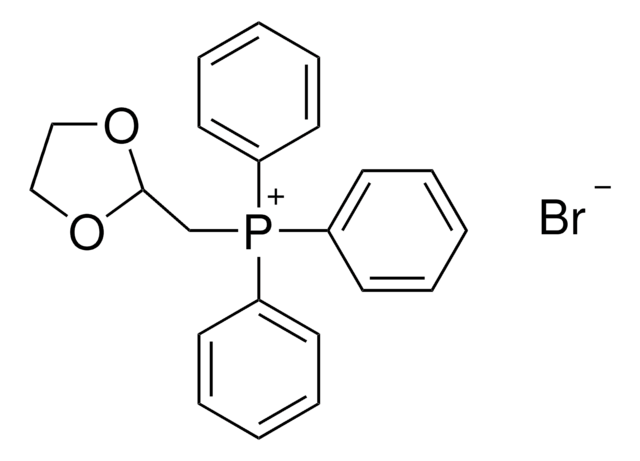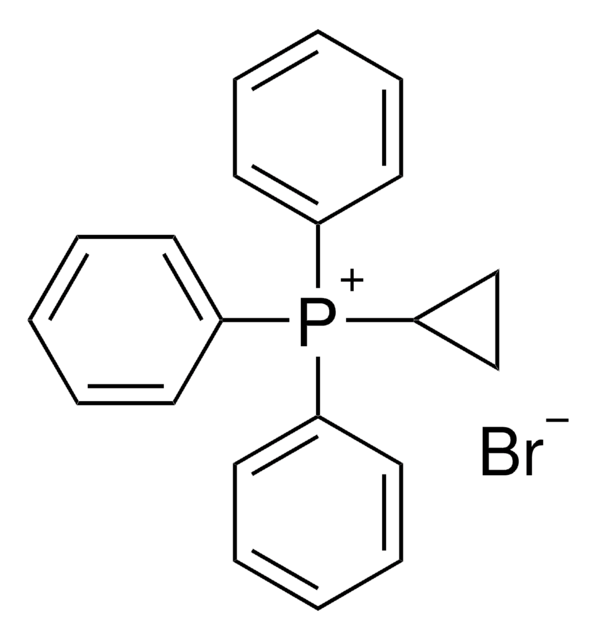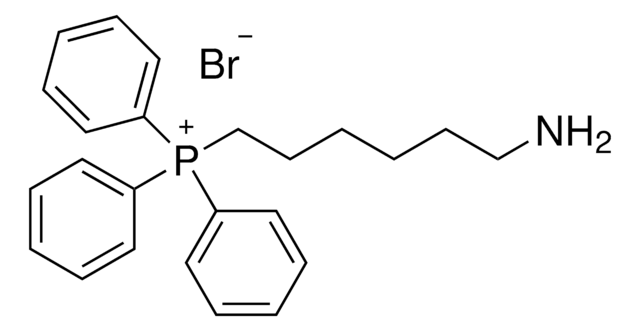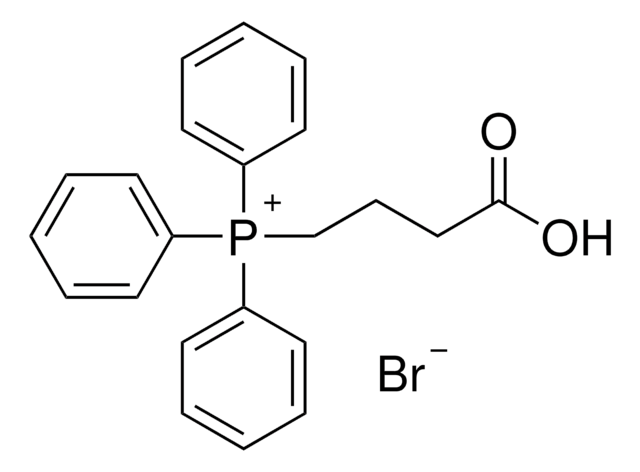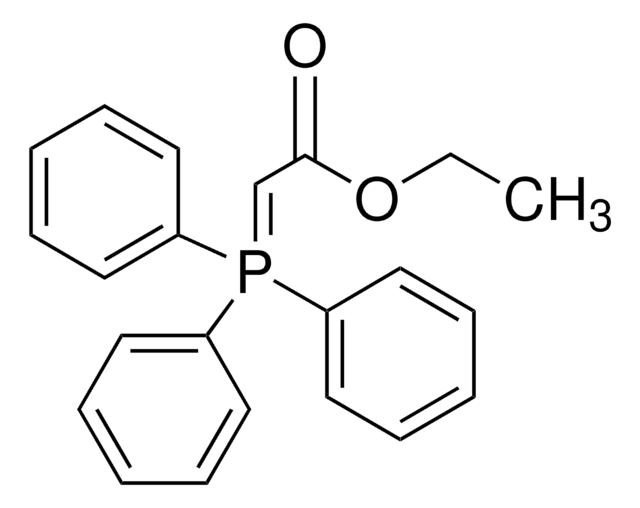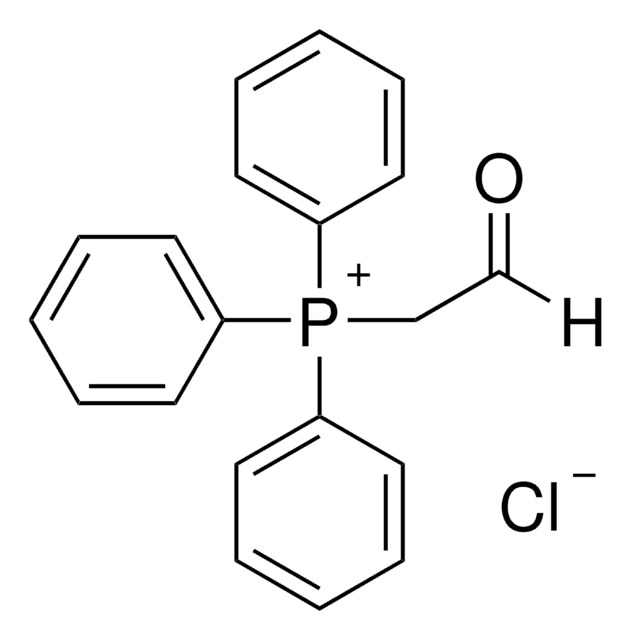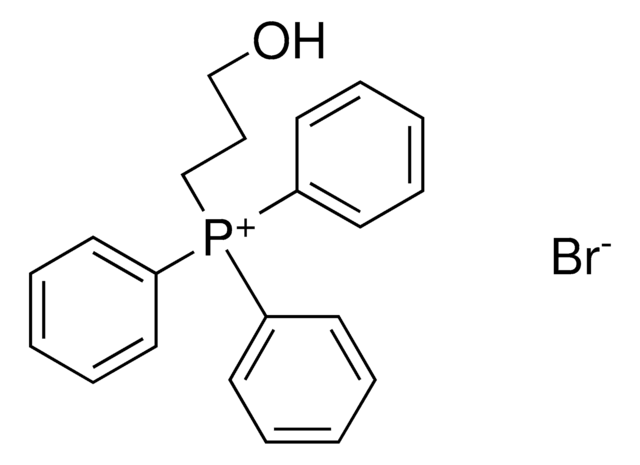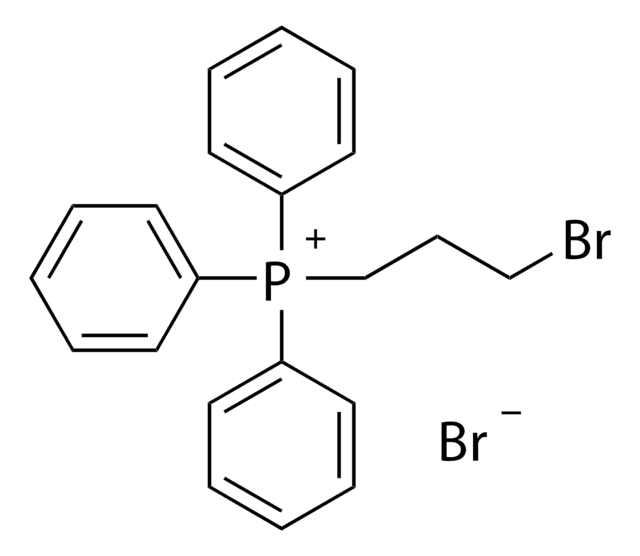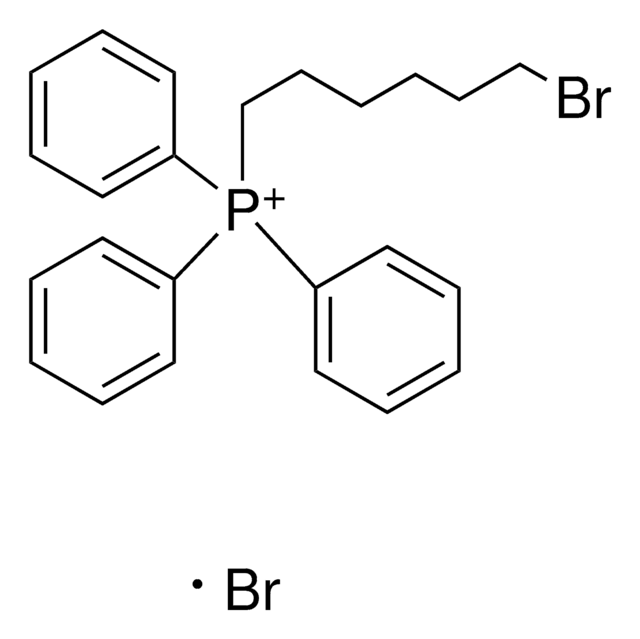219592
2-(1,3-Dioxan-2-yl)ethyltriphenylphosphonium bromide
98%
Recommended Products
Assay
98%
form
solid
reaction suitability
reaction type: C-C Bond Formation
mp
193-195 °C (lit.)
SMILES string
[Br-].C1COC(CC[P+](c2ccccc2)(c3ccccc3)c4ccccc4)OC1
InChI
1S/C24H26O2P.BrH/c1-4-11-21(12-5-1)27(22-13-6-2-7-14-22,23-15-8-3-9-16-23)20-17-24-25-18-10-19-26-24;/h1-9,11-16,24H,10,17-20H2;1H/q+1;/p-1
InChI key
XETDBHNHTOJWPZ-UHFFFAOYSA-M
Looking for similar products? Visit Product Comparison Guide
Application
- As a three-carbon homologating agent used to prepare α,β- or β,γ- unsaturated compounds.
- In the olefination of methyl 5-oxopentanoate to yield methyl 7-(1,3-dioxan2-yl)hept-(5Z)-enoate.
- As a cathode interfacial layer material in polymer solar cells.
- Wittig olefination
WGK
WGK 3
Flash Point(F)
Not applicable
Flash Point(C)
Not applicable
Personal Protective Equipment
Regulatory Information
Certificates of Analysis (COA)
Search for Certificates of Analysis (COA) by entering the products Lot/Batch Number. Lot and Batch Numbers can be found on a product’s label following the words ‘Lot’ or ‘Batch’.
Already Own This Product?
Find documentation for the products that you have recently purchased in the Document Library.
Our team of scientists has experience in all areas of research including Life Science, Material Science, Chemical Synthesis, Chromatography, Analytical and many others.
Contact Technical Service